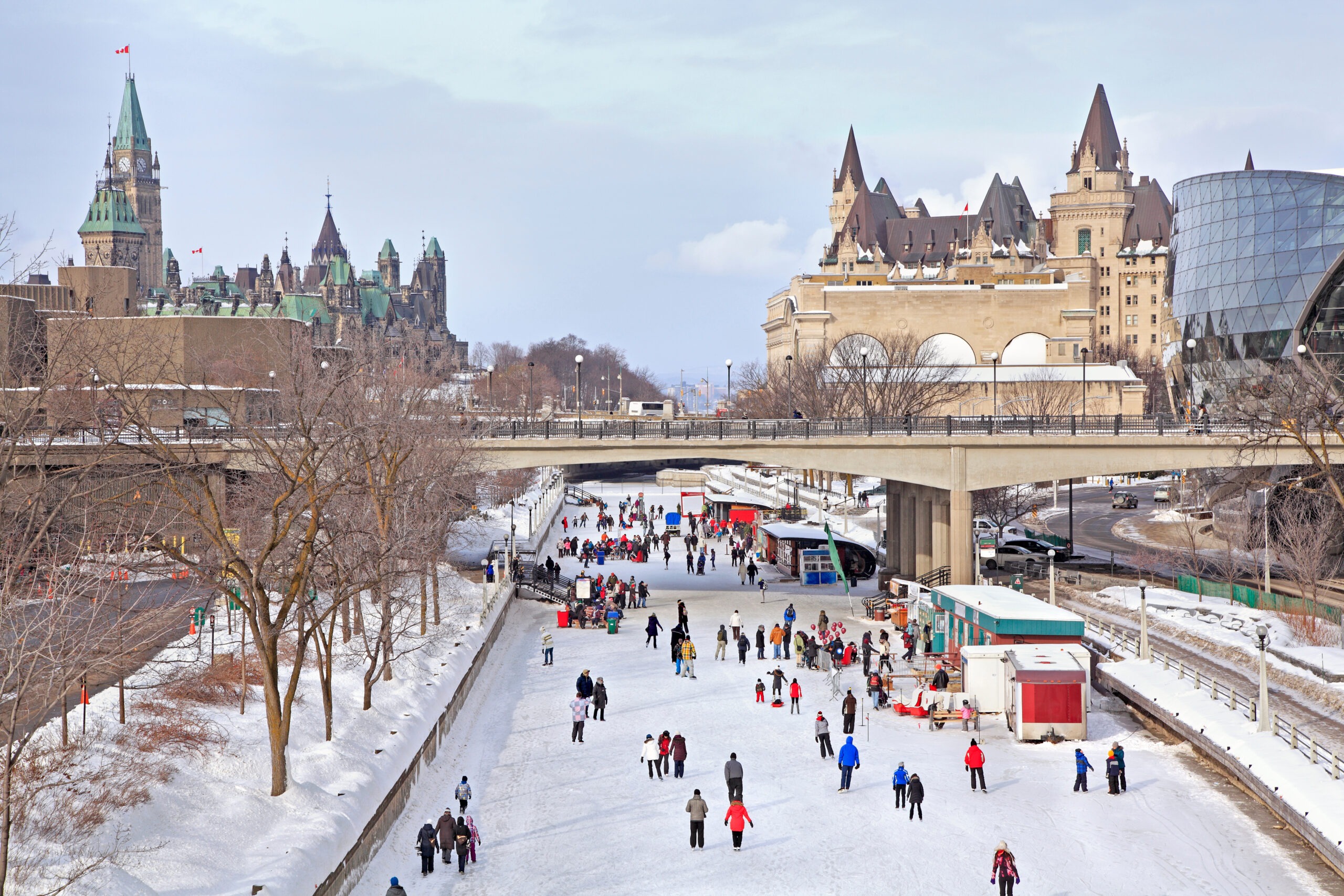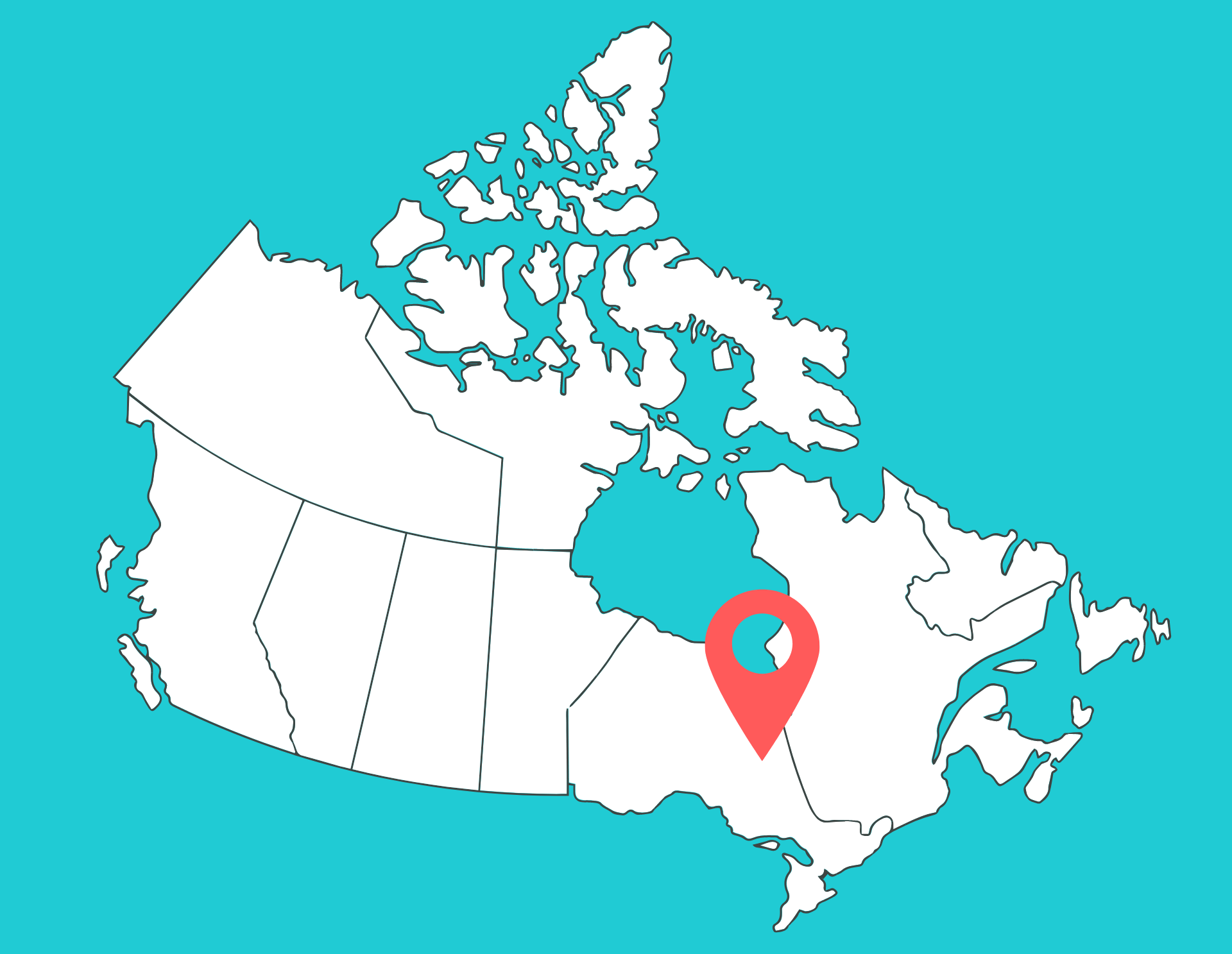
Immigration, Refugees and Citizenship Canada (IRCC) in the Government of Canada activated the annual, international Welcoming Week campaign and celebration for the first time in 2020. Thanks to the efforts and dedication of local organizations throughout Canada, it grew to become a nationwide campaign for communities striving to make Canada a place where all newcomers and long-term residents can thrive.
Communities across Canada have used Welcoming Week as an opportunity to lift up welcoming values. Canadians’ overall support for the number of immigrants coming to the country is strong. In March 2023, 52% of Canadians said that the number of immigrants coming to Canada is about right, and 22% said there are too few immigrants coming to Canada. Of those who experienced Welcoming Week, many people have felt inspired to take a more active role in strengthening a culture of welcome locally.
As part of Welcoming Week, IRCC finds it important to acknowledge that the history of Canada began far earlier than European colonization and settlement, and seeks to understand the history of the Indigenous Peoples who are living on the land and have been there long before immigrants came from all around the world.
Above and beyond Welcoming Week, IRCC supports social cohesion and community engagement through the Immigration Matters campaign. Through storytelling, facts, partnerships and community conversations, the campaign aims to demonstrate to Canadians the benefits of immigration at the local level, dispel common myths about migrants, and promote positive engagement between newcomers and Canadians.
Learn more about IRCC’s partnership in the Welcoming International Alliance and how IRCC is using Welcoming Week to advance their goals in the following interview. Questions and responses have been edited for length and clarity.
What are the primary ways Immigration, Refugees and Citizenship Canada (IRCC) works with local communities to welcome newcomers?
Through our Settlement Program, IRCC invests in a range of initiatives to promote social cohesion, cultural understanding, and community engagement:
Local Immigration Partnerships (LIPs)
LIPs work toward creating welcoming communities by identifying the unique needs and challenges of newcomers and developing strategies to address them. This involves working with different levels of government, community organizations, employers, and other stakeholders to provide services, programs, and resources that help newcomers settle, find employment, access health care and education, and participate in their new communities. They also play an important role in promoting diversity, equity, and social cohesion while helping newcomers feel valued and connected to their new home.
Réseaux en immigration francophone (RIFs)
RIFs are networks that bring together front-line actors in Francophone and Acadian communities and strive to attract, recruit, welcome, and integrate French-speaking newcomers. There are 13 RIFs located across Canada – everywhere but Quebec – and they include hundreds of partner organizations and institutions, such as school boards, economic development organizations, colleges and universities, health services, cultural centres, employment services, provincial and territorial governments or municipalities.
Welcoming Francophone Communities (WFCs)
The WFCs Initiative (or l’initiative des Communautés francophones accueillantes) is at the heart of the Canadian government’s priorities and its Action Plan for Official Languages 2023-2028. It aims to support the vitality of Francophone and Acadian communities and the successful integration of French-speaking newcomers. This initiative is co-led by IRCC and Francophone community organizations outside Quebec, including the 13 RIFs. It follows a community-based approach, where the communities themselves are placed at the heart of the decision-making process. Since its inception in 2020, the number of French-speaking newcomers arriving in these communities each year has more than tripled, from 368 to 1,378 in 2022–2023.
Community Connections
Community Connections programming brings together newcomers, Indigenous Peoples, established immigrants, and long-time Canadian residents to promote intercultural exchanges and social cohesion. Activities allow newcomers to develop a sense of belonging while enabling institutions and community members to better understand the lives of newcomers and support their full participation in society. Projects also support newcomers in navigating their new home, establishing local networks, developing valuable skills, and meeting life goals. One example of programming is Settlement Workers in Schools (SWIS), which welcomes newcomer youth and their parents/guardians into the school system and broader community. Nearly 300 organizations across Canada offer Community Connections programs.
How and why did IRCC get involved with the Welcoming International Alliance?
In March 2020, less than two years after the launch of the Immigration Matters campaign, the COVID-19 pandemic was declared a national emergency in Canada. It brought to light the incredible contributions of immigrants to Canada’s pandemic response and recovery.
At that time, the Government of Canada became a partner in the Welcoming International Alliance to share insights about how other countries were communicating about immigration during the pandemic.
Although each country within the Welcoming International Alliance has its own unique circumstances, we share a common goal of creating welcoming and inclusive places for newcomers. This allows for valuable information sharing that can give us insight into how other countries are working toward achieving this goal.
How and why did IRCC choose to activate the Welcoming Week campaign across Canada?
Being a welcoming country brings significant benefits. Encouraging Canadians to reflect on and discuss the contributions of newcomers helps underscore the valuable role that immigration plays in our communities and our workplaces. It helps ensure social cohesion.
Immigrants are vital in shaping Canada’s future. They contribute significantly to our economy, whether it’s driving innovation across numerous industries, filling labour market gaps in health care, or creating jobs. Immigrants play an essential role in the cultural and economic fabric of Canada.
The advantage of celebrating an international event such as Welcoming Week is to build momentum and encourage those who are already doing amazing work welcoming newcomers to celebrate their success.
IRCC recognizes the important work of many immigrant settlement organizations in this space. Welcoming Week is an excellent opportunity to raise awareness about available services and activities in communities throughout Canada. Successful integration is a two-way street: the more welcoming communities are, the more newcomers feel at home and contribute locally.
A look at Welcoming Week in Timmins, Ontario
“Our neighborhoods thrive when residents connect and build community — and our local economy benefits from newcomers helping to fill gaps in the workforce,” said Christy Marinig, CEO of the Timmins Economic Development Corporation. “Participating in Welcoming Week helped us demonstrate that Timmins is fully committed to inclusion, block by block and in our local business community.”

The community in Timmins, Ontario, recognized that an added benefit of embracing newcomers is countering declining populations and aging workforces. During Welcoming Week, they used the IRCC’s digital toolkit and promoted events on social media, including story exhibits and seminars, tailored to newcomers’ needs. Learn more →
How have you engaged local communities during Welcoming Week over the last few years?
2022 was IRCC’s third year participating in Welcoming Week, as well as the tenth anniversary of Welcoming Week globally. To engage local communities, IRCC developed and distributed a Welcoming Week toolkit to over 16,000 stakeholders, including those who were already actively involved in welcoming work. These included immigrant settlement organizations, schools, universities, colleges, libraries, economic development organizations, and municipalities. The toolkit included ideas on how to participate, as well as ready-to-use social media content and graphics.
Welcoming Week celebrations in 2020 and 2021 were largely restricted to virtual events to respect local public health restrictions due to the COVID-19 pandemic. It was in 2022 that we began to see more interactive in-person events in Canada, more media coverage of those efforts and events, and more social media engagement overall. Visits to our Welcoming Week toolkit nearly tripled, and both social media and traditional media mentions doubled.
What is your advice to other national governments seeking to engage local governments and civil society organizations as event hosts and campaign spokespeople during Welcoming Week?
The most important advice is to reach out to stakeholders who are already doing great work welcoming newcomers. Welcoming Week begins with celebrating and honouring the important work that is already being done.
In Canada, IRCC has tied Welcoming Week outreach to the Immigration Matters campaign, which emphasizes how immigrants enrich Canadian communities. Messaging focuses on the benefits of being welcoming—not just for the newcomer, but also for the entire community. When newcomers feel welcome, they are able to settle more quickly and begin contributing to their communities.
Learn more about Welcoming Week at welcomingweek.org.
